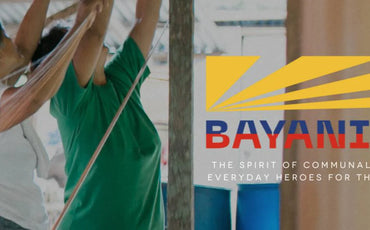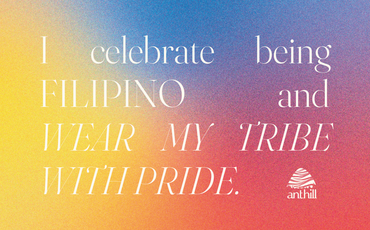Through the years of producing garments and accumulation of textile waste, we have acknowledged the contribution of fashion in environmental pollution. And though we are a small player among many market actors, we want to become part of the solution and inspire action. Since 2016, we continue to work on creative innovations in pursuit of our commitment to circular and sustainable fashion. As we celebrate our 12th anniversary and bid farewell to our ready to wear line , we weave you our final collection- REWORK: We thread new life and mend classic pieces with defects to make it work again for you to wear with pride.
With a patchwork, a trim, a different cut, we spruced up our favorite classics and originals into something new and one of a kind. Our Chief Sustainability and Innovation Officer and Design Lead, Jessica Ouano gives us insight on the inspiration behind REWORK and how it came to be.
What was the inspiration/story behind the collection?
The textile and fashion industry contributes to a number of social and environmental problems. Instead of continuing to contribute to this problem by extracting more resources, we should work towards extending the life of our existing resources. This is something we strongly believe in and that is why we created the Rework collection.
We had a bunch of damaged ANTHILL items that we have collected over the years and we did not want these pieces to go to waste. That is why we decided to rework them. Our goal was to elevate the value of the existing pieces despite its current condition. The collection is also inspired by the work of makers and designers that have adopted various upcycling techniques to extend the life of products. To create this collection, we adopted a simple patchwork technique that adds colors and character to the piece, truly bringing the garments back to life!
What does “rework” mean for you? Why is it important to practice circularity?

Products featured in photo: Rework Panyo Maxi and Rework Azucena Blouse Yakan
Rework to me means recreating a product and making it as beautiful or even more beautiful than it originally was. Keeping products and materials in use is a key principle of the circular economy. Reworking does just that by turning existing damaged products into pieces that can be worn and loved again.
What is your creative process like? Kindly walk us through from the initial concepts to finishing.
For the rework collection, I started by assessing the damaged ANTHILL pieces and deciding how best to address these damages. We set aside garments that only needed minor repairs and other garments with more issues that needed more work. After that, I created a mood board and started choosing handwoven fabric scraps to turn into patches to add to these damaged garments. We identified the sizes of the patches and where on the garments they should be based on the location of the damages. Then finally, we worked with our production partner to cut and sew the patches on the garments.
What makes this collection different from the other circularity collections (i.e. Reweave and the Pamana)?
For the Reweave collection, garments only go through a minor repair or sometimes they don’t need any repairs at all. While the Pamana collection consists of pieces made of our zero waste weave and our sandwich patchwork technique.

Sandwich patchwork technique done in our Panolong Bomber
For the Pamana collection, textile waste was our main input material and we used this to create entirely new garments. The Rework collection also involves minor repairs of existing garments, much like the Reweave collection, but at the same time it makes use of handwoven fabric scraps to help fix bigger damages on the garments.
What kinds of rework have been done to some of the items in the collection?
Majority of the reworked items have handwoven fabric scrap patches to cover damages on the garment. Some of the garments were also taken apart and weaves were used to replace parts of the garments that have huge damages.
Aside from patching, mending, and trimming a garment, how else can we extend the life cycle of clothes?
We can extend the life of our garments through proper garment care. If your garment has a care label, make sure to follow the care instructions properly. Avoid washing your clothes too often because this causes more strain on the garment over time. If you are tired of wearing your existing garments, you can also initiate a clothes swap with your friends or family so you all get new pieces to wear while keeping your garments in use.
How can you assess if a garment is still okay to patch or mend?
Before choosing to adopt a specific mending technique on a damaged garment, I check first if the finished product after mending will still continue to be durable enough to withstand constant use. If your garment is about to fall apart then it would be best to just use the material of the garment for something else like turning it into rags or using it as an input material for an entirely new product.
What tips and suggestions can you give our readers that want to rework the clothes in their own closet?
I suggest learning about different upcycling and mending techniques first so you can decide what you think would be best for your garments. There are lots of great resources online. Youtube has a lot of videos explaining different techniques you can try. If you don’t have much experience in sewing, it would also be good to learn the basics.
More than just clothes, this collection is a testament that the future of fashion is circular. Check out our REWORK collection and see how we thread new life to our old pieces and transform them into something new!
SHOP THE REWORK COLLECTION


